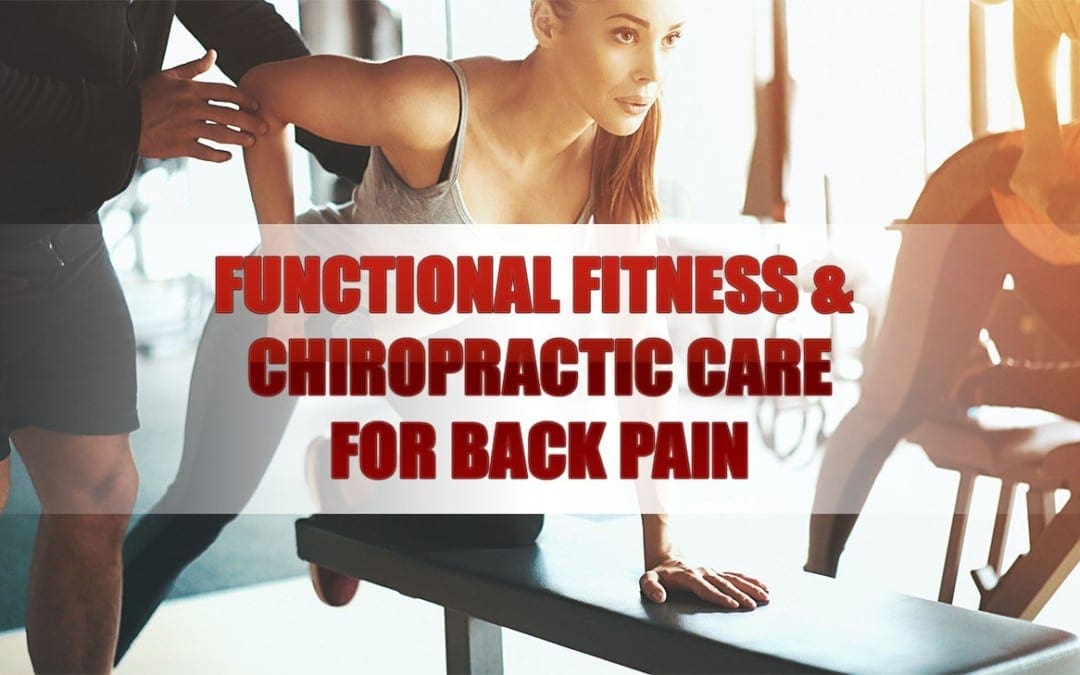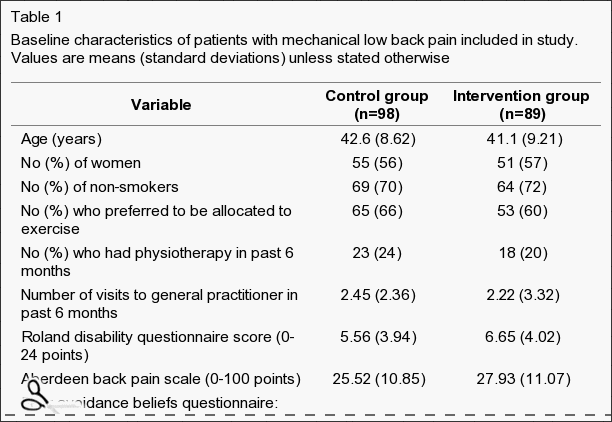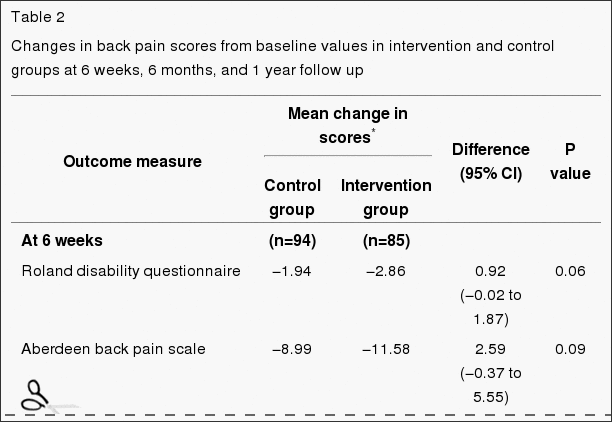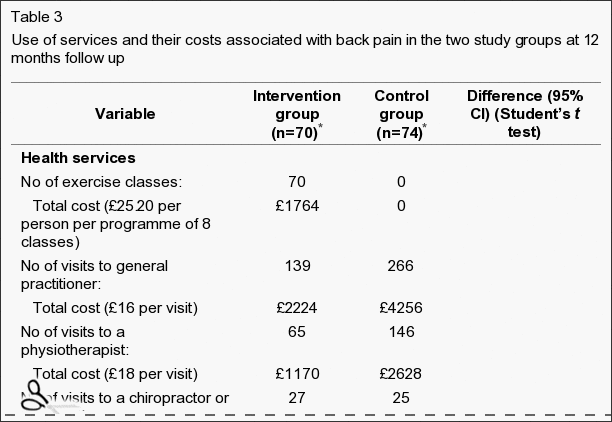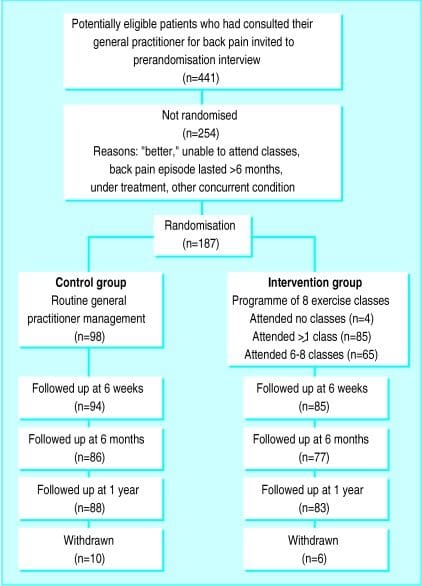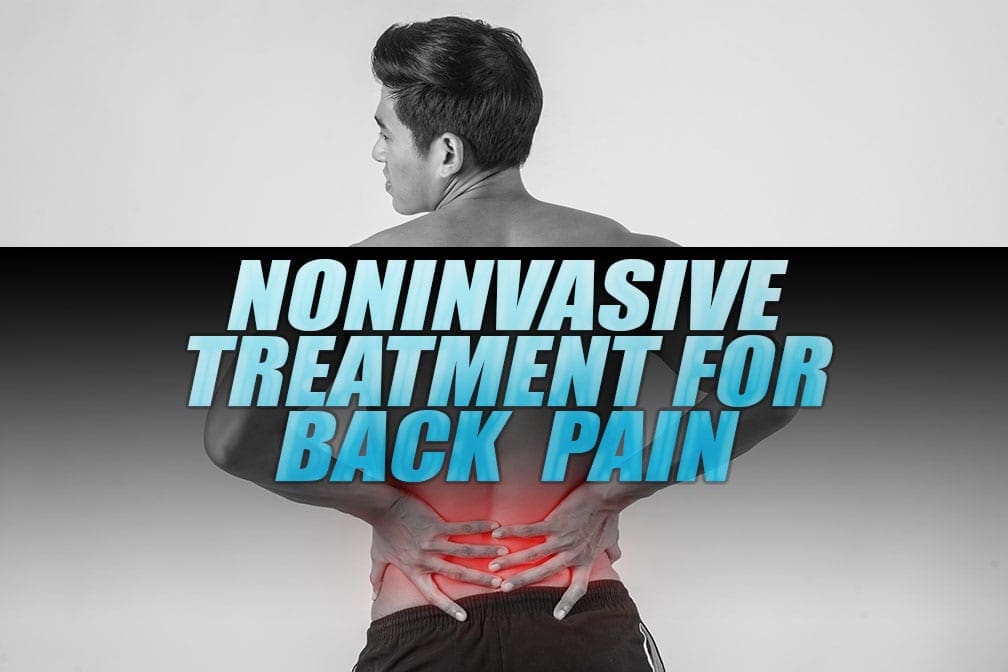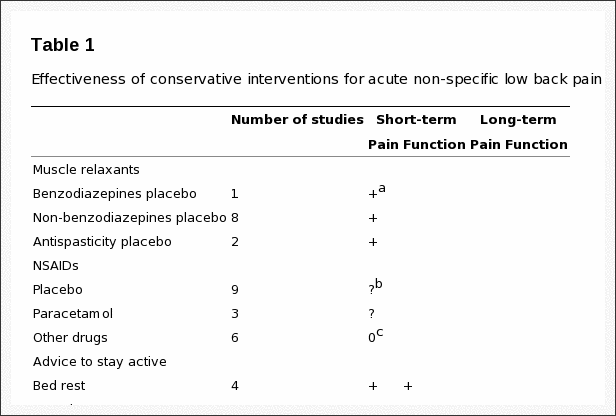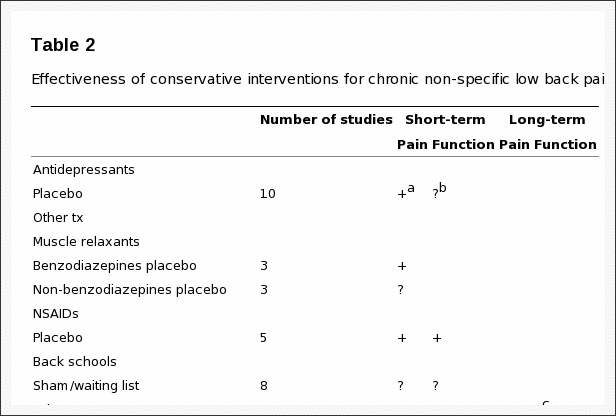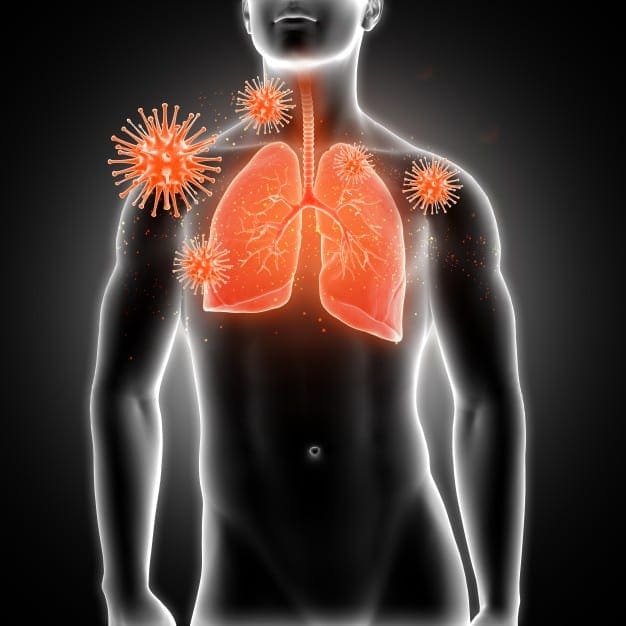1. Nurmatov, U.; Devereux, G.; Sheikh, A. Nutrients and foods for the primary prevention of asthma
and allergy: Systematic review and meta-analysis. J. Allergy Clin. Immunol. 2011, 127,
724�733.e30.
2. Varraso, R.; Fung, T.T.; Barr, R.G.; Hu, F.B.; Willett, W.; Camargo, C.A.J. Prospective study of
dietary patterns and chronic obstructive pulmonary disease among US women. Am. J. Clin. Nutr.
2007, 86, 488�495.
3. Shaheen, S.O.; Jameson, K.A.; Syddall, H.E.; Aihie Sayer, A.; Dennison, E.M.; Cooper, C.;
Robinson, S.M.; Hertfordshire Cohort Study Group. The relationship of dietary patterns with adult
lung function and COPD. Eur. Respir. J. 2010, 36, 277�284.
4. Scott, H.A.; Jensen, M.E.; Wood, L.G. Dietary interventions in asthma. Curr. Pharm. Des. 2014,
20, 1003�1010.
5. Global Initiative for Asthma (GINA). Global Strategy for Asthma Management and Prevention
2012 (update). Available online: http://www.ginasthma.org (accessed on 30 July 2013).
6. Global Initiative for Chronic Obstructive Lung Disease (GOLD). Global Strategy for the
Diagnosis, Management and Prevention of COPD. Available online: http://www.goldcopd.org/
(accessed on 3 December 2014).
7. Saadeh, D.; Salameh, P.; Baldi, I.; Raherison, C. Diet and allergic diseases among population aged
0 to 18 years: Myth or reality? Nutrients 2013, 5, 3399�3423.
8. Willett, W.C.; Sacks, F.; Trichopoulou, A.; Drescher, G.; Ferro-Luzzi, A.; Helsing, E.;
Trichopoulos, D. Mediterranean diet pyramid: A cultural model for healthy eating. Am. J. Clin.
Nutr. 1995, 61, 1402S�1406S.
9. Arvaniti, F.; Priftis, K.N.; Papadimitriou, A.; Papadopoulos, M.; Roma, E.; Kapsokefalou, M.;
Anthracopoulos, M.B.; Panagiotakos, D.B. Adherence to the Mediterranean type of diet is associated
with lower prevalence of asthma symptoms, among 10�12 years old children: The PANACEA
study. Pediatr. Allergy Immunol. 2011, 22, 283�289.
10. Chatzi, L.; Kogevinas, M. Prenatal and childhood Mediterranean diet and the development of
asthma and allergies in children. Public Health Nutr. 2009, 12, 1629�1634.
11. De Batlle, J.; Garcia-Aymerich, J.; Barraza-Villarreal, A.; Ant�, J.M.; Romieu, I. Mediterranean
diet is associated with reduced asthma and rhinitis in Mexican children. Allergy 2008, 63,
1310�1316.
12. Chatzi, L.; Torrent, M.; Romieu, I.; Garcia-Esteban, R.; Ferrer, C.; Vioque, J.; Kogevinas, M.;
Sunyer, J. Mediterranean diet in pregnancy is protective for wheeze and atopy in childhood. Thorax
2008, 63, 507�513.
13. Barros, R.; Moreira, A.; Fonseca, J.; de Oliveira, J.F.; Delgado, L.; Castel-Branco, M.G.; Haahtela,
T.; Lopes, C.; Moreira, P. Adherence to the Mediterranean diet and fresh fruit intake are associated
with improved asthma control. Allergy 2008, 63, 917�923.
14. Wood, L.G.; Gibson, P.G. Dietary factors lead to innate immune activation in asthma. Pharmacol.
Ther. 2009, 123, 37�53.
15. Carey, O.J.; Cookson, J.B.; Britton, J.; Tattersfield, A.E. The effect of lifestyle on wheeze, atopy,
and bronchial hyperreactivity in Asian and white children. Am. J. Respir. Crit. Care Med. 1996, 154,
537�540.
16. Huang, S.L.; Lin, K.C.; Pan, W.H. Dietary factors associated with physician-diagnosed asthma and
allergic rhinitis in teenagers: Analyses of the first Nutrition and Health Survey in Taiwan. Clin.
Exp. Allergy 2001, 31, 259�264.
17. Wickens, K.; Barry, D.; Friezema, A.; Rhodius, R.; Bone, N.; Purdie, G.; Crane, J. Fast foods�
Are they a risk factor for asthma? Allergy 2005, 60, 1537�1541.
18. Hijazi, N.; Abalkhail, B.; Seaton, A. Diet and childhood asthma in a society in transition: A study
in urban and rural Saudi Arabia. Thorax 2000, 55, 775�779.
19. Varraso, R.; Kauffmann, F.; Leynaert, B.; Le Moual, N.; Boutron-Ruault, M.C.; Clavel-Chapelon,
F.; Romieu, I. Dietary patterns and asthma in the E3N study. Eur. Respir. J. 2009, 33, 33�41.
20. Wood, L.G.; Garg, M.L.; Gibson, P.G. A high-fat challenge increases airway inflammation and
impairs bronchodilator recovery in asthma. J. Allergy Clin. Immunol. 2011, 127, 1133�1140.
21. Netting, M.J.; Middleton, P.F.; Makrides, M. Does maternal diet during pregnancy and lactation
affect outcomes in offspring? A systematic review of food-based approaches. Nutrition 2014, 30,
1225�1241.
22. Grieger, J.; Wood, L.; Clifton, V. Improving asthma during pregnancy with dietary antioxidants:
The current evidence. Nutrients 2013, 5, 3212�3234.
23. Butland, B.K.; Fehily, A.M.; Elwood, P.C. Diet, lung function, and lung function decline in
a cohort of 2512 middle aged men. Thorax 2000, 55, 102�108.
24. Carey, I.M.; Strachan, D.P.; Cook, D.G. Effects of changes in fresh fruit consumption on
ventilatory function in healthy British adults. Am. J. Respir. Crit. Care Med. 1998, 158, 728�733.
25. Wood, L.G.; Garg, M.L.; Smart, J.M.; Scott, H.A.; Barker, D.; Gibson, P.G. Manipulating
antioxidant intake in asthma: A randomized controlled trial. Am. J. Clin. Nutr. 2012, 96, 534�543.
26. Seyedrezazadeh, E.; Moghaddam, M.P.; Ansarin, K.; Vafa, M.R.; Sharma, S.; Kolahdooz, F. Fruit
and vegetable intake and risk of wheezing and asthma: A systematic review and meta-analysis. Nutr.
Rev. 2014, 72, 411�428.
27. Erkkola, M.; Nwaru, B.I.; Kaila, M.; Kronberg-Kippil�, C.; Ilonen, J.; Simell, O.; Veijola, R.;
Knip, M.; Virtanen, S.M. Risk of asthma and allergic outcomes in the offspring in relation to
maternal food consumption during pregnancy: A Finnish birth cohort study. Pediatr. Allergy
Immunol. 2012, 23, 186�194.
28. Fitzsimon, N.; Fallon, U.; O�Mahony, D.; Loftus, B.G.; Bury, G.; Murphy, A.W.; Kelleher, C.C.;
Lifeways Cross Generation Cohort Study Steering Group. Mother�s dietary patterns during
pregnancy and risk of asthma symptoms in children at 3 years. Ir. Med. J. 2007, 100, 27�32.
29. Baldrick, F.R.; Elborn, J.S.; Woodside, J.V.; Treacy, K.; Bradley, J.M.; Patterson, C.C.;
Schock, B.C.; Ennis, M.; Young, I.S.; McKinley, M.C. Effect of fruit and vegetable intake on
oxidative stress and inflammation in COPD: A randomised controlled trial. Eur. Respir. J. 2012, 39,
1377�1384.
30. Keranis, E.; Makris, D.; Rodopoulou, P.; Martinou, H.; Papamakarios, G.; Daniil, Z.; Zintzaras, E.;
Gourgoulianis, K.I. Impact of dietary shift to higher-antioxidant foods in COPD: A randomised
trial. Eur. Respir. J. 2010, 36, 774�780.
31. Thies, F.; Miles, E.A.; Nebe-von-Caron, G.; Powell, J.R.; Hurst, T.L.; Newsholme, E.A.;
Calder, P.C. Influence of dietary supplementation with long-chain n-3 or n-6 polyunsaturated fatty
acids on blood inflammatory cell populations and functions and on plasma soluble adhesion
molecules in healthy adults. Lipids 2001, 36, 1183�1193.
32. Kelley, D.S.; Taylor, P.C.; Nelson, G.J.; Schmidt, P.C.; Ferretti, A.; Erickson, K.L.; Yu, R.;
Chandra, R.K.; Mackey, B.E. Docosahexaenoic acid ingestion inhibits natural killer cell activity
and production of inflammatory mediators in young healthy men. Lipids 1999, 34, 317�324.
33. Lo, C.J.; Chiu, K.C.; Fu, M.; Chu, A.; Helton, S. Fish oil modulates macrophage P44/P42 mitogenactivated
protein kinase activity induced by lipopolysaccharide. J. Parenter. Enter. Nutr. 2000, 24,
159�163.
34. Calder, P.C. n-3 Polyunsaturated fatty acids, inflammation, and inflammatory diseases. Am. J. Clin.
Nutr. 2006, 83, 1505S�1519S.
35. Peat, J.K.; Salome, C.M.; Woolcock, A.J. Factors associated with bronchial hyperresponsiveness
in Australian adults and children. Eur. Respir. J. 1992, 5, 921�929.
36. Tabak, C.; Wijga, A.H.; de Meer, G.; Janssen, N.A.; Brunekreef, B.; Smit, H.A. Diet and asthma
in Dutch school children (ISAAC-2). Thorax 2006, 61, 1048�1053.
37. Takemura, Y.; Sakurai, Y.; Honjo, S.; Tokimatsu, A.; Tokimatsu, A.; Gibo, M.; Hara, T.; Kusakari,
A.; Kugai, N. The relationship between fish intake and the prevalence of asthma: The Tokorozawa
childhood asthma and pollinosis study. Prev. Med. 2002, 34, 221�225.
38. De Luis, D.A.; Armentia, A.; Aller, R.; Asensio, A.; Sedano, E.; Izaola, O.; Cuellar, L. Dietary
intake in patients with asthma: A case control study. Nutrition 2005, 21, 320�324.
39. Laerum, B.N.; Wentzel-Larsen, T.; Gulsvik, A.; Omenaas, E.; Gislason, T.; Janson, C.; Svanes, C.
Relationship of fish and cod oil intake with adult asthma. Clin. Exp. Allergy 2007, 37, 1616�1623.
40. McKeever, T.M.; Lewis, S.A.; Cassano, P.A.; Ocke, M.; Burney, P.; Britton, J.; Smit, H.A.
The relation between dietary intake of individual fatty acids, FEV1 and respiratory disease in Dutch
adults. Thorax 2008, 63, 208�214.
41. Salam, M.T.; Li, Y.F.; Langholz, B.; Gilliland, F.D. Maternal fish consumption during pregnancy
and risk of early childhood asthma. J. Asthma 2005, 42, 513�518.
42. Klemens, C.M.; Berman, D.R.; Mozurkewich, E.L. The effect of perinatal omega-3 fatty acid
supplementation on inflammatory markers and allergic diseases: A systematic review. BJOG 2011,
118, 916�925.
43. Thien, F.C.K.; Woods, R.; De Luca, S.; Abramson, M.J. Dietary marine fatty acids (fish oil) for
asthma in adults and children (Cochrane Review). In The Cochrane Library; John Wiley & Sons,
Ltd.: Chichester, UK, 2002 (updated 2010).
44. Shahar, E.; Boland, L.L.; Folsom, A.R.; Tockman, M.S.; McGovern, P.G.; Eckfeldt, J.H.
Docosahexaenoic acid and smoking-related chronic obstructive pulmonary disease. Am. J. Respir.
Crit. Care Med. 1999, 159, 1780�1785.
45. De Batlle, J.; Sauleda, J.; Balcells, E.; G�mez, F.P.; M�ndez, M.; Rodriguez, E.; Barreiro, E.;
Ferrer, J.J.; Romieu, I.; Gea, J.; et al. Association between ?3 and ?6 fatty acid intakes and serum
inflammatory markers in COPD. J. Nutr. Biochem. 2012, 23, 817�821.
46. Broekhuizen, R.; Wouters, E.F.; Creutzberg, E.C.; Weling-Scheepers, C.A.; Schols, A.M.
Polyunsaturated fatty acids improve exercise capacity in chronic obstructive pulmonary disease.
Thorax 2005, 60, 376�382.
47. Fulton, A.S.; Hill, A.M.; Williams, M.T.; Howe, P.R.; Frith, P.A.; Wood, L.G.; Garg, M.L.;
Coates, A.M. Feasibility of omega-3 fatty acid supplementation as an adjunct therapy for people
with chronic obstructive pulmonary disease: Study protocol for a randomized controlled trial.
Trials 2013, 14, 107.
48. Texas A&M University, USA. Eicosapentaenoic Acid and Protein Modulation to Induce Anabolism
in Chronic Obstructive Pulmonary Disease (COPD): Aim 2 NLM Identifier: NCT01624792.
Available online: https://clinicaltrials.gov/ct2/show/NCT01624792 (accessed on 29 September 2014).
49. National Institute of Environmental Health Sciences; Columbia University, USA. The Chronic
Obstructive Pulmonary Disease Fish Oil Pilot Trial (COD-Fish). Available online:
http://clinicaltrials.gov/show/NCT00835289 (accessed on 29 September 2014).
50. Wood, L.G.; Gibson, P.G.; Garg, M.L. Biomarkers of lipid peroxidation, airway inflammation and
asthma. Eur. Respir. J. 2003, 21, 177�186.
51. Kelly, F.J. Vitamins and respiratory disease: Antioxidant micronutrients in pulmonary health and
disease. Proc. Nutr. Soc. 2005, 64, 510�526.
52. Rahman, I. Oxidative stress, chromatin remodeling and gene transcription in inflammation and
chronic lung diseases. J. Biochem. Mol. Biol. 2003, 36, 95�109.
53. Ochs-Balcom, H.M.; Grant, B.J.; Muti, P.; Sempos, C.T.; Freudenheim, J.L.; Browne, R.W.;
McCann, S.E.; Trevisan, M.; Cassano, P.A.; Iacoviello, L.; et al. Antioxidants, oxidative stress,
and pulmonary function in individuals diagnosed with asthma or COPD. Eur. J. Clin. Nutr. 2006, 60,
991�999.
54. Wood, L.G.; Garg, M.L.; Powell, H.; Gibson, P.G. Lycopene-rich treatments modify
noneosinophilic airway inflammation in asthma: Proof of concept. Free Radic. Res. 2008, 42,
94�102.
55. Clifton, V.L.; Vanderlelie, J.; Perkins, A.V. Increased anti-oxidant enzyme activity and biological
oxidation in placentae of pregnancies complicated by maternal asthma. Placenta 2005, 26, 773�779.
56. McLernon, P.C.; Wood, L.G.; Murphy, V.E.; Hodyl, N.A.; Clifton, V.L. Circulating antioxidant
profile of pregnant women with asthma. Clin. Nutr. 2012, 31, 99�107.
57. Miyake, Y.; Sasaki, S.; Tanaka, K.; Hirota, Y. Dairy food, calcium and vitamin D intake in
pregnancy, and wheeze and eczema in infants. Eur. Respir. J. 2010, 35, 1228�1234.
58. Kumar, R. Prenatal factors and the development of asthma. Curr. Opin. Pediatr. 2008, 20,
682�687.
59. Bowie, A.G.; O�Neill, L.A. Vitamin C inhibits NF-kappa B activation by TNF via the activation
of p38 mitogen-activated protein kinase. J. Immunol. 2000, 165, 7180�7188.
60. Jeong, Y.-J.; Kim, J.-H.; Kang, J.S.; Lee, W.J.; Hwang, Y. Mega-dose vitamin C attenuated lung
inflammation in mouse asthma model. Anat. Cell Biol. 2010, 43, 294�302.
61. Chang, H.-H.; Chen, C.-S.; Lin, J.-Y. High Dose Vitamin C Supplementation Increases the
Th1/Th2 Cytokine Secretion Ratio, but Decreases Eosinophilic Infiltration in Bronchoalveolar
Lavage Fluid of Ovalbumin-Sensitized and Challenged Mice. J. Agric. Food Chem. 2009, 57,
10471�10476.
62. Forastiere, F.; Pistelli, R.; Sestini, P.; Fortes, C.; Renzoni, E.; Rusconi, F.; Dell�Orco, V.; Ciccone,
G.; Bisanti, L. The SIDRIA Collaborative Group, I. Consumption of fresh fruit rich in vitamin C
and wheezing symptoms in children. Thorax 2000, 55, 283�288.
63. Emmanouil, E.; Manios, Y.; Grammatikaki, E.; Kondaki, K.; Oikonomou, E.; Papadopoulos, N.;
Vassilopoulou, E. Association of nutrient intake and wheeze or asthma in a Greek pre-school
population. Pediatr. Allergy Immunol. 2010, 21, 90�95.
64. Cook, D.G.; Carey, I.M.; Whincup, P.H.; Papacosta, O.; Chirico, S.; Bruckdorfer, K.R.; Walker, M.
Effect of fresh fruit consumption on lung function and wheeze in children. Thorax 1997, 52,
628�633.
65. Schwartz, J.; Weiss, S.T. Relationship between dietary vitamin C intake and pulmonary function
in the First National Health and Nutrition Examination Survey (NHANES I). Am. J. Clin. Nutr.
1994, 59, 110�114.
66. Shaheen, S.O.; Sterne, J.A.; Thompson, R.L.; Songhurst, C.E.; Margetts, B.M.; Burney, P.G.
Dietary antioxidants and asthma in adults: Population-based case-control study. Am. J. Respir. Crit.
Care Med. 2001, 164, 1823�1828.
67. Koike, K.; Ishigami, A.; Sato, Y.; Hirai, T.; Yuan, Y.; Kobayashi, E.; Tobino, K.; Sato, T.; Sekiya,
M.; Takahashi, K.; et al. Vitamin C Prevents Cigarette Smoke�Induced Pulmonary Emphysema in
Mice and Provides Pulmonary Restoration. Am. J. Respir. Cell Mol. Biol. 2013, 50, 347�357.
68. Lin, Y.C.; Wu, T.C.; Chen, P.Y.; Hsieh, L.Y.; Yeh, S.L. Comparison of plasma and intake levels
of antioxidant nutrients in patients with chronic obstructive pulmonary disease and healthy people
in Taiwan: A case-control study. Asia Pac. J. Clin. Nutr. 2010, 19, 393�401.
69. Sargeant, L.A.; Jaeckel, A.; Wareham, N.J. Interaction of vitamin C with the relation between
smoking and obstructive airways disease in EPIC Norfolk. European Prospective Investigation into
Cancer and Nutrition. Eur. Respir. J. 2000, 16, 397�403.
70. Brigelius-Flohe, R.; Traber, M.G. Vitamin E: Function and metabolism. FASEB J. 1999, 13,
1145�1155.
71. Huang, J.; May, J.M. Ascorbic acid spares ?-tocopherol and prevents lipid peroxidation in cultured
H4IIE liver cells. Mol. Cell. Biochem. 2003, 247, 171�176.
72. Abdala-Valencia, H.; Berdnikovs, S.; Cook-Mills, J. Vitamin E isoforms as modulators of lung
inflammation. Nutrients 2013, 5, 4347�4363.
73. Mabalirajan, U.; Aich, J.; Leishangthem, G.D.; Sharma, S.K.; Dinda, A.K.; Ghosh, B. Effects of
vitamin E on mitochondrial dysfunction and asthma features in an experimental allergic murine
model. J. Appl. Physiol. 2009, 107, 1285�1292.
74. McCary, C.A.; Abdala-Valencia, H.; Berdnikovs, S.; Cook-Mills, J.M. Supplemental and highly
elevated tocopherol doses differentially regulate allergic inflammation: Reversibility of ?-tocopherol
and ?-tocopherol�s effects. J. Immunol. 2011, 186, 3674�3685.
75. He, Y.; Franchi, L.; Nunez, G. The protein kinase PKR is critical for LPS-induced iNOS production
but dispensable for inflammasome activation in macrophages. Eur. J. Immunol. 2013, 43, 1147�1152.
76. Fakhrzadeh, L.; Laskin, J.D.; Laskin, D.L. Ozone-induced production of nitric oxide and TNF-?
and tissue injury are dependent on NF-kappaB p50. Am. J. Physiol. Lung Cell. Mol. Physiol. 2004,
287, L279�L285.
77. Hernandez, M.L.; Wagner, J.G.; Kala, A.; Mills, K.; Wells, H.B.; Alexis, N.E.; Lay, J.C.; Jiang, Q.;
Zhang, H.; Zhou, H.; et al. Vitamin E, ?-tocopherol, reduces airway neutrophil recruitment after
inhaled endotoxin challenge in rats and in healthy volunteers. Free Radic. Biol. Med. 2013, 60,
56�62.
78. Dow, L.; Tracey, M.; Villar, A.; Coggon, D.; Margetts, B.M.; Campbell, M.J.; Holgate, S.T. Does
dietary intake of vitamins C and E influence lung function in older people? Am. J. Respir. Crit.
Care Med. 1996, 154, 1401�1404.
79. Smit, H.A.; Grievink, L.; Tabak, C. Dietary influences on chronic obstructive lung disease and
asthma: A review of the epidemiological evidence. Proc. Nutr. Soc. 1999, 58, 309�319.
80. Tabak, C.; Smit, H.A.; Rasanen, L.; Fidanza, F.; Menotti, A.; Nissinen, A.; Feskens, E.J.; Heederik,
D.; Kromhout, D. Dietary factors and pulmonary function: A cross sectional study in middle aged
men from three European countries. Thorax 1999, 54, 1021�1026.
81. Weiss, S.T. Diet as a risk factor for asthma. Ciba Found. Symp. 1997, 206, 244�257.
82. Troisi, R.J.; Willett, W.C.; Weiss, S.T.; Trichopoulos, D.; Rosner, B.; Speizer, F.E. A prospective
study of diet and adult-onset asthma. Am. J. Respir. Crit. Care Med. 1995, 151, 1401�1408.
83. Devereux, G.; Seaton, A. Diet as a risk factor for atopy and asthma. J. Allergy Clin. Immonol.
2005, 115, 1109�1117.
84. Tug, T.; Karatas, F.; Terzi, S.M. Antioxidant vitamins (A, C and E) and malondialdehyde levels in
acute exacerbation and stable periods of patients with chronic obstructive pulmonary disease. Clin.
Investig. Med. 2004, 27, 123�128.
85. Daga, M.K.; Chhabra, R.; Sharma, B.; Mishra, T.K. Effects of exogenous vitamin E supplementation
on the levels of oxidants and antioxidants in chronic obstructive pulmonary disease. J. Biosci.
2003, 28, 7�11.
86. Wu, T.C.; Huang, Y.C.; Hsu, S.Y.; Wang, Y.C.; Yeh, S.L. Vitamin E and vitamin C supplementation
in patients with chronic obstructive pulmonary disease. Int. J. Vitam. Nutr. Res. 2007, 77,
272�279.
87. Agler, A.H.; Kurth, T.; Gaziano, J.M.; Buring, J.E.; Cassano, P.A. Randomised vitamin E
supplementation and risk of chronic lung disease in the Women�s Health Study. Thorax 2011, 66,
320�325.
88. West, C.E.; Dunstan, J.; McCarthy, S.; Metcalfe, J.; D�Vaz, N.; Meldrum, S.; Oddy, W.H.;
Tulic, M.K.; Prescott, S.L. Associations between maternal antioxidant intakes in pregnancy and
infant allergic outcomes. Nutrients 2012, 4, 1747�1758.
89. Abdala-Valencia, H.; Berdnikovs, S.; Soveg, F.W.; Cook-Mills, J.M. ?-Tocopherol Supplementation
of Allergic Female Mice Inhibits Development of CD11c+CD11b+ Dendritic Cells in Utero and
Allergic Inflammation in Neonates. Am. J. Physiol. Lung Cell. Mol. Physiol. 2014, 307, L482�L496.
90. Litonjua, A.A.; Rifas-Shiman, S.L.; Ly, N.P.; Tantisira, K.G.; Rich-Edwards, J.W.;
Camargo, C.A., Jr.; Weiss, S.T.; Gillman, M.W.; Gold, D.R. Maternal antioxidant intake in
pregnancy and wheezing illnesses in children at 2 year of age. Am. J. Clin. Nutr. 2006, 84, 903�911.
91. Miyake, Y.; Sasaki, S.; Tanaka, K.; Hirota, Y. Consumption of vegetables, fruit, and antioxidants
during pregnancy and wheeze and eczema in infants. Allergy 2010, 65, 758�765.
92. Devereux, G.; Turner, S.W.; Craig, L.C.; McNeill, G.; Martindale, S.; Harbour, P.J.; Helms, P.J.;
Seaton, A. Low maternal vitamin E intake during pregnancy is associated with asthma in 5-year-old
children. Am. J. Respir. Crit. Care Med. 2006, 174, 499�507.
93. Devereux, G.; Barker, R.N.; Seaton, A. Antenatal determinants of neonatal immune responses to
allergens. Clin. Exp. Allergy 2002, 32, 43�50.
94. Wassall, H.; Devereux, G.; Seaton, A.; Barker, R. Complex effects of vitamin E and vitamin C
supplementation on in vitro neonatal mononuclear cell responses to allergens. Nutrients 2013, 5,
3337�3351.
95. Tanaka, T.; Takahashi, R. Flavonoids and asthma. Nutrients 2013, 5, 2128�2143.
96. Manach, C.; Scalbert, A.; Morand, C.; Remesy, C.; Jimenez, L. Polyphenols: Food sources and
bioavailability. Am. J. Clin. Nutr. 2004, 79, 727�747.
97. Hirano, T.; Higa, S.; Arimitsu, J.; Naka, T.; Shima, Y.; Ohshima, S.; Fujimoto, M.; Yamadori, T.;
Kawase, I.; Tanaka, T. Flavonoids such as luteolin, fisetin and apigenin are inhibitors of
interleukin-4 and interleukin-13 production by activated human basophils. Int. Arch. Allergy
Immunol. 2004, 134, 135�140.
98. Kawai, M.; Hirano, T.; Higa, S.; Arimitsu, J.; Maruta, M.; Kuwahara, Y.; Ohkawara, T.; Hagihara,
K.; Yamadori, T.; Shima, Y.; et al. Flavonoids and related compounds as anti-allergic substances.
Allergol. Int. 2007, 56, 113�123.
99. Nair, M.P.; Mahajan, S.; Reynolds, J.L.; Aalinkeel, R.; Nair, H.; Schwartz, S.A.; Kandaswami, C.
The flavonoid quercetin inhibits proinflammatory cytokine (tumor necrosis factor alpha) gene
expression in normal peripheral blood mononuclear cells via modulation of the NF-kappa beta
system. Clin. Vaccine Immunol. 2006, 13, 319�328.
100. Nair, M.P.N.; Kandaswami, C.; Mahajan, S.; Chadha, K.C.; Chawda, R.; Nair, H.; Kumar, N.;
Nair, R.E.; Schwartz, S.A. The flavonoid, quercetin, differentially regulates Th-1 (IFN?) and Th-2
(IL4) cytokine gene expression by normal peripheral blood mononuclear cells. Biochim. Biophys.
Acta Mol. Cell Res. 2002, 1593, 29�36.
101. Leemans, J.; Cambier, C.; Chandler, T.; Billen, F.; Clercx, C.; Kirschvink, N.; Gustin, P.
Prophylactic effects of omega-3 polyunsaturated fatty acids and luteolin on airway
hyperresponsiveness and inflammation in cats with experimentally-induced asthma. Vet. J.
2010, 184, 111�114.
102. Li, R.R.; Pang, L.L.; Du, Q.; Shi, Y.; Dai, W.J.; Yin, K.S. Apigenin inhibits allergen-induced
airway inflammation and switches immune response in a murine model of asthma.
Immunopharmacol. Immunotoxicol. 2010, 32, 364�370.
103. Wu, M.Y.; Hung, S.K.; Fu, S.L. Immunosuppressive effects of fisetin in ovalbumin-induced
asthma through inhibition of NF-kB activity. J. Agric. Food Chem. 2011, 59, 10496�10504.
104. Rogerio, A.P.; Kanashiro, A.; Fontanari, C.; da Silva, E.V.G.; Lucisano-Valim, Y.M.; Soares, E.G.;
Faccioli, L.H. Anti-inflammatory activity of quercetin and isoquercitrin in experimental murine
allergic asthma. Inflamm. Res. 2007, 56, 402�408.
105. Garcia, V.; Arts, I.C.; Sterne, J.A.; Thompson, R.L.; Shaheen, S.O. Dietary intake of flavonoids
and asthma in adults. Eur. Respir. J. 2005, 26, 449�452.
106. Belcaro, G.; Luzzi, R.; Cesinaro di Rocco, P.; Cesarone, M.R.; Dugall, M.; Feragalli, B.;
Errichi, B.M.; Ippolito, E.; Grossi, M.G.; Hosoi, M.; et al. Pycnogenol improvements in asthma
management. Panminerva Med. 2011, 53, 57�64.
107. Willers, S.M.; Devereux, G.; Craig, L.C.A.; McNeill, G.; Wijga, A.H.; Abou El-Magd, W.; Turner,
S.W.; Helms, P.J.; Seaton, A. Maternal food consumption during pregnancy and asthma,
respiratory and atopic symptoms in 5-year-old children. Thorax 2007, 62, 773�779.
108. Holick, M.F. Vitamin D deficiency. N. Engl. J. Med. 2007, 357, 266�281.
109. Hart, P.H.; Lucas, R.M.; Walsh, J.P.; Zosky, G.R.; Whitehouse, A.J.O.; Zhu, K.; Allen, K.L.;
Kusel, M.M.; Anderson, D.; Mountain, J.A. Vitamin D in Fetal Development: Findings From
a Birth Cohort Study. Pediatrics 2014, doi:10.1542/peds.2014-1860.
110. Hart, P.H.; Gorman, S.; Finlay-Jones, J.J. Modulation of the immune system by UV radiation:
More than just the effects of vitamin D? Nat. Rev. Immunol. 2011, 11, 584�596.
111. Foong, R.; Zosky, G. Vitamin D deficiency and the lung: Disease initiator or disease modifier?
Nutrients 2013, 5, 2880�2900.
112. Hiemstra, P.S. The role of epithelial ?-defensins and cathelicidins in host defense of the lung. Exp.
Lung Res. 2007, 33, 537�542.
113. Martinesi, M.; Bruni, S.; Stio, M.; Treves, C. 1,25-Dihydroxyvitamin D3 inhibits tumor necrosis
factor-?-induced adhesion molecule expression in endothelial cells. Cell Biol. Int. 2006, 30,
365�375.
114. Song, Y.; Qi, H.; Wu, C. Effect of 1,25-(OH)2D3 (a vitamin D analogue) on passively sensitized
human airway smooth muscle cells. Respirology 2007, 12, 486�494.
115. Zosky, G.R.; Berry, L.J.; Elliot, J.G.; James, A.L.; Gorman, S.; Hart, P.H. Vitamin D deficiency
causes deficits in lung function and alters lung structure. Am. J. Respir. Crit. Care Med. 2011, 183,
1336�1343.
116. Pichler, J.; Gerstmayr, M.; Szepfalusi, Z.; Urbanek, R.; Peterlik, M.; Willheim, M. 1?,25(OH)2D3
inhibits not only Th1 but also Th2 differentiation in human cord blood T cells. Pediatr. Res. 2002,
52, 12�18.
117. Gupta, A.; Sjoukes, A.; Richards, D.; Banya, W.; Hawrylowicz, C.; Bush, A.; Saglani, S.
Relationship between serum vitamin D, disease severity and airway remodeling in children with
asthma. Am. J. Respir. Crit. Care Med. 2011, 184, 1342�1349.
118. Brehm, J.M.; Schuemann, B.; Fuhlbrigge, A.L.; Hollis, B.W.; Strunk, R.C.; Zeiger, R.S.; Weiss,
S.T.; Litonjua, A.A. Serum vitamin D levels and severe asthma exacerbations in the Childhood
Asthma Management Program study. J. Allergy Clin. Immonol. 2010, 126, 52�58.
119. Zosky, G.R.; Hart, P.H.; Whitehouse, A.J.; Kusel, M.M.; Ang, W.; Foong, R.E.; Chen, L.; Holt, P.G.;
Sly, P.D.; Hall, G.L. Vitamin D deficiency at 16 to 20 weeks� gestation is associated with impaired
lung function and asthma at 6 years of age. Ann. Am. Thorac. Soc. 2014, 11, 571�577.
120. Searing, D.A.; Zhang, Y.; Murphy, J.R.; Hauk, P.J.; Goleva, E.; Leung, D.Y. Decreased serum
vitamin D levels in children with asthma are associated with increased corticosteroid use. J. Allergy
Clin. Immonol. 2010, 125, 995�1000.
121. Xystrakis, E.; Kusumakar, S.; Boswell, S.; Peek, E.; Urry, Z.; Richards, D.F.; Adikibi, T.;
Pridgeon, C.; Dallman, M.; Loke, T.K.; et al. Reversing the defective induction of IL-10 secreting
regulatory T cells in glucocorticoid-resistant asthma patients. J. Clin. Investig. 2006, 116,
146�155.
122. Castro, M.; King, T.S.; Kunselman, S.J.; Cabana, M.D.; Denlinger, L.; Holguin, F.; Kazani, S.D.;
Moore, W.C.; Moy, J.; Sorkness, C.A.; et al. Effect of vitamin D3 on asthma treatment failures in
adults with symptomatic asthma and lower vitamin D levels: The VIDA randomized clinical trial.
JAMA 2014, 311, 2083�2091.
123. Janssens, W.; Bouillon, R.; Claes, B.; Carremans, C.; Lehouck, A.; Buysschaert, I.; Coolen, J.;
Mathieu, C.; Decramer, M.; Lambrechts, D. Vitamin D deficiency is highly prevalent in COPD
and correlates with variants in the vitamin D-binding gene. Thorax 2010, 65, 215�220.
124. Black, P.N.; Scragg, R. Relationship between serum 25-hydroxyvitamin D and pulmonary function
survey. Chest 2005, 128, 3792�3798.
125. Persson, L.J.; Aanerud, M.; Hiemstra, P.S.; Hardie, J.A.; Bakke, P.S.; Eagan, T.M. Chronic
obstructive pulmonary disease is associated with low levels of vitamin D. PLoS One 2012,
7, e38934.
126. Uh, S.T.; Koo, S.M.; Kim, Y.K.; Kim, K.U.; Park, S.W.; Jang, A.S.; Kim, D.J.; Kim, Y.H.;
Park, C.S. Inhibition of vitamin D receptor translocation by cigarette smoking extracts. Tuberc.
Respir. Dis. 2012, 73, 258�265.
127. Wood, A.M.; Bassford, C.; Webster, D.; Newby, P.; Rajesh, P.; Stockley, R.A.; Thickett, D.R.
Vitamin D-binding protein contributes to COPD by activation of alveolar macrophages. Thorax
2011, 66, 205�210.
128. Sundar, I.K.; Hwang, J.W.; Wu, S.; Sun, J.; Rahman, I. Deletion of vitamin D receptor leads to
premature emphysema/COPD by increased matrix metalloproteinases and lymphoid aggregates
formation. Biochem. Biophys. Res. Commun. 2011, 406, 127�133.
129. Lehouck, A.; Mathieu, C.; Carremans, C.; Baeke, F.; Verhaegen, J.; Van Eldere, J.; Decallonne,
B.; Bouillon, R.; Decramer, M.; Janssens, W. High doses of vitamin D to reduce exacerbations in
chronic obstructive pulmonary disease: A randomized trial. Ann. Intern. Med. 2012, 156, 105�114.
130. Baker, J.C.; Ayres, J.G. Diet and asthma. Respir. Med. 2000, 94, 925�934.
131. Pogson, Z.E.K.; Antoniak, M.D.; Pacey, S.J.; Lewis, S.A.; Britton, J.R.; Fogarty, A.W.
Does a low sodium diet improve asthma control? A randomized controlled trial. Am. J. Respir.
Crit. Care Med. 2008, 178, 132�138.
132. Matthew, R.; Altura, B. The role of magnesium in lung diseases: Asthma, allergy, and pulmonary
hypertension. Magnes. Trace Elem. 1991, 10, 220�228.
133. Baker, J.; Tunnicliffe, W.; Duncanson, R.; Ayres, J. Dietary antioxidants in type 1 brittle asthma:
A case control study. Thorax 1999, 54, 115�118.
134. Gilliand, F.; Berhane, K.; Li, Y.; Kim, D.; Margolis, H. Dietary magnesium, potassium, sodium
and childrens lung function. Am. J. Epidemiol. 2002, 155, 125�131.
135. Kim, J.-H.; Ellwood, P.; Asher, M.I. Diet and asthma: Looking back, moving forward. Respir. Res.
2009, 10, 49�55.
136. Kadrabova, J.; Mad�aric, A.; Kovacikova, Z.; Podiv�nsky, F.; Ginter, E.; Gazd�k, F. Selenium
status is decreased in patients with intrinsic asthma. Biol. Trace Elem. Res. 1996, 52, 241�248.
137. Devereux, G.; McNeill, G.; Newman, G.; Turner, S.; Craig, L.; Martindale, S.; Helms, P.; Seaton,
A. Early childhood wheezing symptoms in relation to plasma selenium in pregnant mothers and
neonates. Clin. Exp. Allergy 2007, 37, 1000�1008.
138. Burney, P.; Potts, J.; Makowska, J.; Kowalski, M.; Phillips, J.; Gnatiuc, L.; Shaheen, S.; Joos, G.;
Van Cauwenberge, P.; van Zele, T.; et al. A case control study of the relation between plasma
selenium and asthma in European populations: A GAL2EN project. Allergy 2008, 63, 865�871.
139. Shaheen, S.O.; Newson, R.B.; Rayman, M.P.; Wong, A.P.; Tumilty, M.K.; Phillips, J.M.;
Potts, J.F.; Kelly, F.J.; White, P.T.; Burney, P.G. Randomised, double blind, placebo controlled
trial of selenium supplementation in adult asthma. Thorax 2007, 62, 483�490.
140. Shaheen, S.O.; Newson, R.B.; Henderson, A.J.; Emmett, P.M.; Sherriff, A.; Cooke, M.; Team, A.S.
Umbilical cord trace elements and minerals and risk of early childhood wheezing and eczema. Eur.
Respir. J. 2004, 24, 292�297.
141. Andersson, I.; Gr�nberg, A.; Slinde, F.; Bosaeus, I.; Larsson, S. Vitamin and mineral status in
elderly patients with chronic obstructive pulmonary disease. Clin. Respir. J. 2007, 1, 23�29.
142. Periyalil, H.; Gibson, P.; Wood, L. Immunometabolism in obese asthmatics: Are we there yet?
Nutrients 2013, 5, 3506�3530.
143. Mathis, D.; Shoelson, S.E. Immunometabolism: An emerging frontier. Nat. Rev. Immunol.
2011, 11, 81.
144. Medzhitov, R. Origin and physiological roles of inflammation. Nature 2008, 454, 428�435.
145. Berthon, B.S.; Macdonald-Wicks, L.K.; Gibson, P.G.; Wood, L.G. Investigation of the association
between dietary intake, disease severity and airway inflammation in asthma. Respirology 2013, 18,
447�454.
146. Procaccini, C.; Jirillo, E.; Matarese, G. Leptin as an immunomodulator. Mol. Aspects Med.
2012, 33, 35�45.
147. Caldefie-Chezet, F.; Poulin, A.; Vasson, M.P. Leptin regulates functional capacities of
polymorphonuclear neutrophils. Free Radic. Res. 2003, 37, 809�814.
148. Zarkesh-Esfahani, H.; Pockley, A.G.; Wu, Z.; Hellewell, P.G.; Weetman, A.P.; Ross, R.J.
Leptin indirectly activates human neutrophils via induction of TNF-alpha. J. Immunol. 2004, 172,
1809�1814.
149. Lugogo, N.L.; Hollingsworth, J.W.; Howell, D.L.; Que, L.G.; Francisco, D.; Church, T.D.;
Potts-Kant, E.N.; Ingram, J.L.; Wang, Y.; Jung, S.H.; et al. Alveolar macrophages from
overweight/obese subjects with asthma demonstrate a proinflammatory phenotype. Am. J. Respir.
Crit. Care Med. 2012, 186, 404�411.
150. Shore, S.A.; Terry, R.D.; Flynt, L.; Xu, A.; Hug, C. Adiponectin attenuates allergen-induced
airway inflammation and hyperresponsiveness in mice. J. Allergy Clin. Immonol. 2006, 118,
389�395.
151. Wood, L.G.; Gibson, P.G. Adiponectin: The link between obesity and asthma in women? Am. J.
Respir. Crit. Care Med. 2012, 186, 1�2.
152. Wood, L.G.; Baines, K.J.; Fu, J.; Scott, H.A.; Gibson, P.G. The neutrophilic inflammatory
phenotype is associated with systemic inflammation in asthma. Chest 2012, 142, 86�93.
153. Scott, H.A.; Gibson, P.G.; Garg, M.L.; Wood, L.G. Airway inflammation is augmented by obesity
and fatty acids in asthma. Eur. Respir. J. 2011, 38, 594�602.
154. Telenga, E.D.; Tideman, S.W.; Kerstjens, H.A.; Hacken, N.H.; Timens, W.; Postma, D.S.;
van den Berge, M. Obesity in asthma: More neutrophilic inflammation as a possible explanation
for a reduced treatment response. Allergy 2012, 67, 1060�1068.
155. Forno, E.; Young, O.M.; Kumar, R.; Simhan, H.; Celed�n, J.C. Maternal Obesity in Pregnancy,
Gestational Weight Gain, and Risk of Childhood Asthma. Pediatrics 2014, 134, e535�e546.
156. Franssen, F.M.; O�Donnell, D.E.; Goossens, G.H.; Blaak, E.E.; Schols, A.M. Obesity and the lung:
5. Obesity and COPD. Thorax 2008, 63, 1110�1117.
157. Zhou, L.; Yuan, C.; Zhang, J.; Yu, R.; Huang, M.; Adcock, I.M.; Yao, X. Circulating Leptin
Concentrations in Patients with Chronic Obstructive Pulmonary Disease: A Systematic Review
and Meta-Analysis. Respiration 2014, 86, 512�522.
158. Bianco, A.; Mazzarella, G.; Turchiarelli, V.; Nigro, E.; Corbi, G.; Scudiero, O.; Sofia, M.; Daniele,
A. Adiponectin: An attractive marker for metabolic disorders in chronic obstructive pulmonary
disease (COPD). Nutrients 2013, 5, 4115�4125.
159. Daniele, A.; de Rosa, A.; de Cristofaro, M.; Monaco, M.L.; Masullo, M.; Porcile, C.; Capasso, M.;
Tedeschi, G.; Oriani, G.; di Costanzo, A. Decreased concentration of adiponectin together with
a selective reduction of its high molecular weight oligomers is involved in metabolic complications
of myotonic dystrophy type 1. Eur. J. Endocrinol. 2011, 165, 969�975.
160. Kadowaki, T.; Yamauchi, T. Adiponectin and adiponectin receptors. Endocr. Rev. 2005, 26,
439�451.
161. Nigro, E.; Scudiero, O.; Sarnataro, D.; Mazzarella, G.; Sofia, M.; Bianco, A.; Daniele, A.
Adiponectin affects lung epithelial A549 cell viability counteracting TNFa and IL-1? toxicity
through AdipoR1. Int. J. Biochem. Cell Biol. 2013, 45, 1145�1153.
162. Gable, D.R.; Matin, J.; Whittall, R.; Cakmak, H.; Li, K.W.; Cooper, J.; Miller, G.J.; Humphries, S.E.;
HIFMECH investigators. Common adiponectin gene variants show different effects on risk of
cardiovascular disease and type 2 diabetes in European subjects. Ann. Hum. Genet. 2007, 71,
453�466.
163. Yoon, H.I.; Li, Y.; Man, S.F.; Tashkin, D.; Wise, R.A.; Connett, J.E.; Anthonisen, N.A.; Churg, A.;
Wright, J.L.; Sin, D.D. The complex relationship of serum adiponectin to COPD outcomes COPD
and adiponectin. Chest 2012, 142, 893�899.
164. Daniele, A.; de Rosa, A.; Nigro, E.; Scudiero, O.; Capasso, M.; Masullo, M.; de Laurentiis, G.;
Oriani, G.; Sofia, M.; Bianco, A. Adiponectin oligomerization state and adiponectin receptors
airway expression in chronic obstructive pulmonary disease. Int. J. Biochem. Cell Biol. 2012, 44,
563�569.
165. Petridou, E.T.; Mitsiades, N.; Gialamas, S.; Angelopoulos, M.; Skalkidou, A.; Dessypris, N.;
Hsi, A.; Lazaris, N.; Polyzos, A.; Syrigos, C.; et al. Circulating adiponectin levels and expression
of adiponectin receptors in relation to lung cancer: Two case-control studies. Oncology 2007, 73,
261�269.
166. Ajuwon, K.M.; Spurlock, M.E. Adiponectin inhibits LPS-induced NF-kappaB activation and
IL-6 production and increases PPARgamma2 expression in adipocytes. Am. J. Physiol. Regul.
Integr. Comp. Physiol. 2005, 288, R1220�R1225.
167. Cheng, X.; Folco, E.J.; Shimizu, K.; Libby, P. Adiponectin induces pro-inflammatory programs in
human macrophages and CD4+ T cells. J. Biol. Chem. 2012, 287, 36896�36904.
168. Miller, M.; Pham, A.; Cho, J.Y.; Rosenthal, P.; Broide, D.H. Adiponectin-deficient mice are
protected against tobacco-induced inflammation and increased emphysema. Am. J. Physiol. Lung
Cell. Mol. Physiol. 2010, 299, L834�L842.
169. Furukawa, T.; Hasegawa, T.; Suzuki, K.; Koya, T.; Sakagami, T.; Youkou, A.; Kagamu, H.;
Arakawa, M.; Gejyo, F.; Narita, I.; et al. Influence of underweight on asthma control. Allergol. Int.
2012, 61, 489�496.
170. Harding, R.; Maritz, G. Maternal and fetal origins of lung disease in adulthood. Semin. Fetal.
Neonatal Med. 2012, 17, 67�72.
171. Itoh, M.; Tsuji, T.; Nemoto, K.; Nakamura, H.; Aoshiba, K. Undernutrition in patients with COPD
and its treatment. Nutrients 2013, 5, 1316�1335.
172. Hallin, R.; Koivisto-Hursti, U.K.; Lindberg, E.; Janson, C. Nutritional status, dietary energy intake
and the risk of exacerbations in patients with chronic obstructive pulmonary disease (COPD).
Respir. Med. 2006, 100, 561�567.
173. Gr�nberg, A.M.; Slinde, F.; Engstr�m, C.P.; Hulth�n, L.; Larsson, S. Dietary problems in patients
with severe chronic obstructive disease. J. Hum. Nutr. Diet. 2005, 18, 445�452.
174. Wilson, D.O.; Donahoe, M.; Rogers, R.M.; Pennock, B.E. Metabolic rate and weight loss in
chronic obstructive lung disease. J. Parenter. Enter. Nutr. 1990, 14, 7�11.
175. Gan, W.Q.; Man, S.F.; Senthilselvan, A.; Sin, D.D. Association between chronic obstructive
pulmonary disease and systemic inflammation: A systematic review and a meta-analysis. Thorax
2004, 59, 574�580.
176. Orlander, J.; Kiessling, K.H.; Larsson, L. Skeletal muscle metabolism, morphology and function
in sedentary smokers and nonsmokers. Acta Physiol. Scand. 1979, 107, 39�46.
177. Kok, M.O.; Hoekstra, T.; Twisk, J.W.R. The Longitudinal Relation between Smoking and Muscle
Strength in Healthy Adults. Eur. Addict. Res. 2012, 18, 70�75.
178. Gosker, H.R.; Langen, R.C.J.; Bracke, K.R.; Joos, G.F.; Brusselle, G.G.; Steele, C.; Ward, K.A.;
Wouters, E.F.M.; Schols, A.M.W.J. Extrapulmonary Manifestations of Chronic Obstructive
Pulmonary Disease in a Mouse Model of Chronic Cigarette Smoke Exposure. Am. J. Respir. Cell
Mol. Biol. 2009, 40, 710�716.
179. Nakatani, T.; Nakashima, T.; Kita, T.; Ishihara, A. Effects of exposure to cigarette smoke at
different dose levels on extensor digitorum longus muscle fibres in Wistar-Kyoto and spontaneously
hypertensive rats. Clin. Exp. Pharmacol. Physiol. 2003, 30, 671�677.
180. Remels, A.H.; Gosker, H.R.; Langen, R.C.; Schols, A.M. The mechanisms of cachexia underlying
muscle dysfunction in COPD. J. Appl. Physiol. (1985) 2013, 114, 1253�1262.
181. Caron, M.A.; Debigare, R.; Dekhuijzen, P.N.; Maltais, F. Comparative assessment of the
quadriceps and the diaphragm in patients with COPD. J. Appl. Physiol. (1985) 2009, 107,
952�961.
182. Vogiatzis, I.; Simoes, D.C.; Stratakos, G.; Kourepini, E.; Terzis, G.; Manta, P.; Athanasopoulos, D.;
Roussos, C.; Wagner, P.D.; Zakynthinos, S. Effect of pulmonary rehabilitation on muscle
remodelling in cachectic patients with COPD. Eur. Respir. J. 2010, 36, 301�310.
183. Kythreotis, P.; Kokkini, A.; Avgeropoulou, S.; Hadjioannou, A.; Anastasakou, E.; Rasidakis, A.;
Bakakos, P. Plasma leptin and insulin-like growth factor I levels during acute exacerbations of
chronic obstructive pulmonary disease. BMC Pulm. Med. 2009, 9, 11.
184. Barreiro, E.; Rabinovich, R.; Marin-Corral, J.; Barbera, J.A.; Gea, J.; Roca, J. Chronic endurance
exercise induces quadriceps nitrosative stress in patients with severe COPD. Thorax 2009, 64,
13�19.
185. Plant, P.J.; Brooks, D.; Faughnan, M.; Bayley, T.; Bain, J.; Singer, L.; Correa, J.; Pearce, D.;
Binnie, M.; Batt, J. Cellular markers of muscle atrophy in chronic obstructive pulmonary disease.
Am. J. Respir. Cell Mol. Biol. 2010, 42, 461�471.
186. Langen, R.C.; Haegens, A.; Vernooy, J.H.; Wouters, E.F.; de Winther, M.P.; Carlsen, H.; Steele, C.;
Shoelson, S.E.; Schols, A.M. NF-kappaB activation is required for the transition of pulmonary
inflammation to muscle atrophy. Am. J. Respir. Cell Mol. Biol. 2012, 47, 288�297.
187. Sharma, R.; Anker, S.D. Cytokines, apoptosis and cachexia: The potential for TNF antagonism.
Int. J. Cardiol. 2002, 85, 161�171.
188. Ferreira, I.M.; Brooks, D.; White, J.; Goldstein, R. Nutritional supplementation for stable chronic
obstructive pulmonary disease. Cochrane Database Syst. Rev. 2012, 12, CD000998.
189. Planas, M.; Alvarez, J.; Garc�a-Peris, P.A.; de la Cuerda, C.; de Lucas, P.; Castell�, M.; Canseco, F.;
Reyes, L. Nutritional support and quality of life in stable chronic obstructive pulmonary disease
(COPD) patients. Clin. Nutr. 2005, 24, 433�441.
190. Sugawara, K.; Takahashi, H.; Kasai, C.; Kiyokawa, N.; Watanabe, T.; Fujii, S.; Kashiwagura, T.;
Honma, M.; Satake, M.; Shioya, T. Effects of nutritional supplementation combined with
low-intensity exercise in malnourished patients with COPD. Respir. Med. 2010, 104, 1883�1889.
191. Al-Ghimlas, F.; Todd, D.C. Creatine supplementation for patients with COPD receiving
pulmonary rehabilitation: A systematic review and meta-analysis. Respirology 2010, 15, 785�795.
192. Morimitsu, Y.; Nakagawa, Y.; Hayashi, K.; Fujii, H.; Kumagai, T.; Nakamura, Y.; Osawa, T.;
Horio, F.; Itoh, K.; Iida, K.; et al. A sulforaphane analogue that potently activates the Nrf2-
dependent detoxification pathway. J. Biol. Chem. 2002, 277, 3456�3463.
193. Meja, K.K.; Rajendrasozhan, S.; Adenuga, D.; Biswas, S.K.; Sundar, I.K.; Spooner, G.;
Marwick, J.A.; Chakravarty, P.; Fletcher, D.; Whittaker, P.; et al. Curcumin restores corticosteroid
function in monocytes exposed to oxidants by maintaining HDAC2. Am. J. Respir. Cell Mol. Biol.
2008, 39, 312�323.
194. Engelen, M.P.; Rutten, E.P.; de Castro, C.L.; Wouters, E.F.; Schols, A.M.; Deutz, N.E.
Supplementation of soy protein with branched-chain amino acids alters protein metabolism in
healthy elderly and even more in patients with chronic obstructive pulmonary disease. Am. J. Clin.
Nutr. 2007, 85, 431�439.
195. Dal Negro, R.W.; Aquilani, R.; Bertacco, S.; Boschi, F.M.C.; Tognella, S. Comprehensive effects of
supplemented essential amino acids in patients with severe COPD and sarcopenia. Monaldi Arch.
Chest Dis. 2010, 73, 25�33.
196. Varraso, R. Nutrition and asthma. Curr. Allergy Asthma Rep. 2012, 12, 201�210.

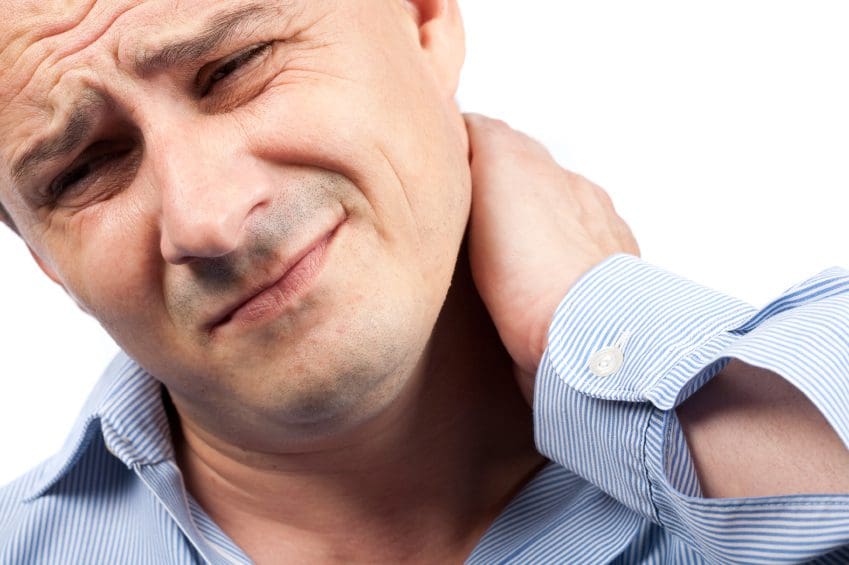 #1: Reduces Inflammation To Promote Healing
#1: Reduces Inflammation To Promote Healing


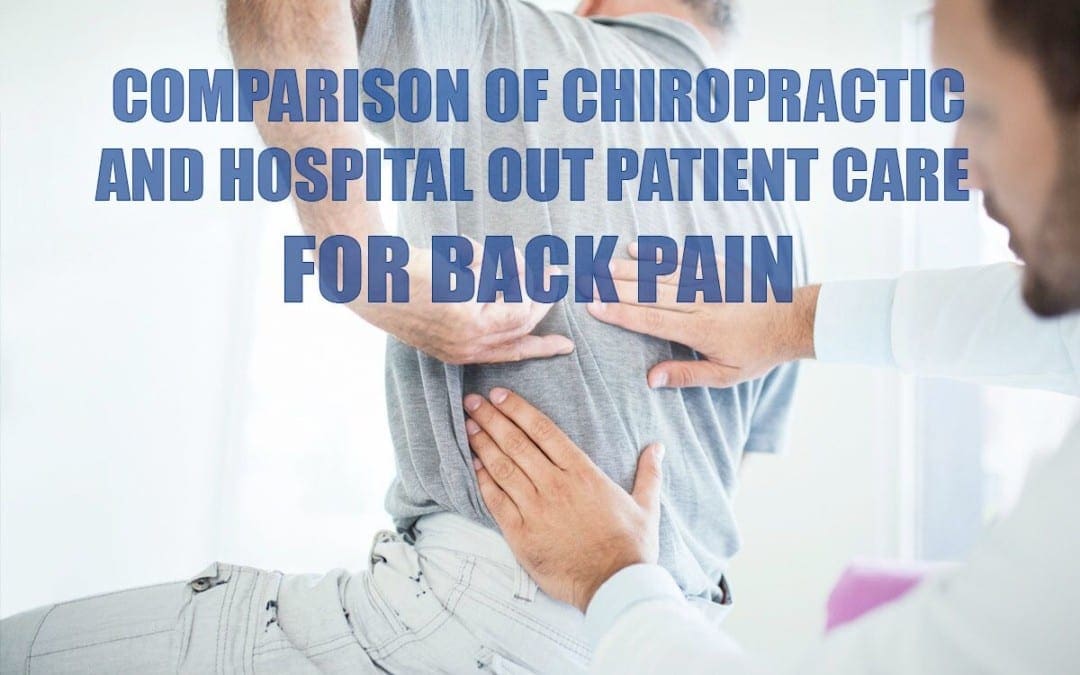
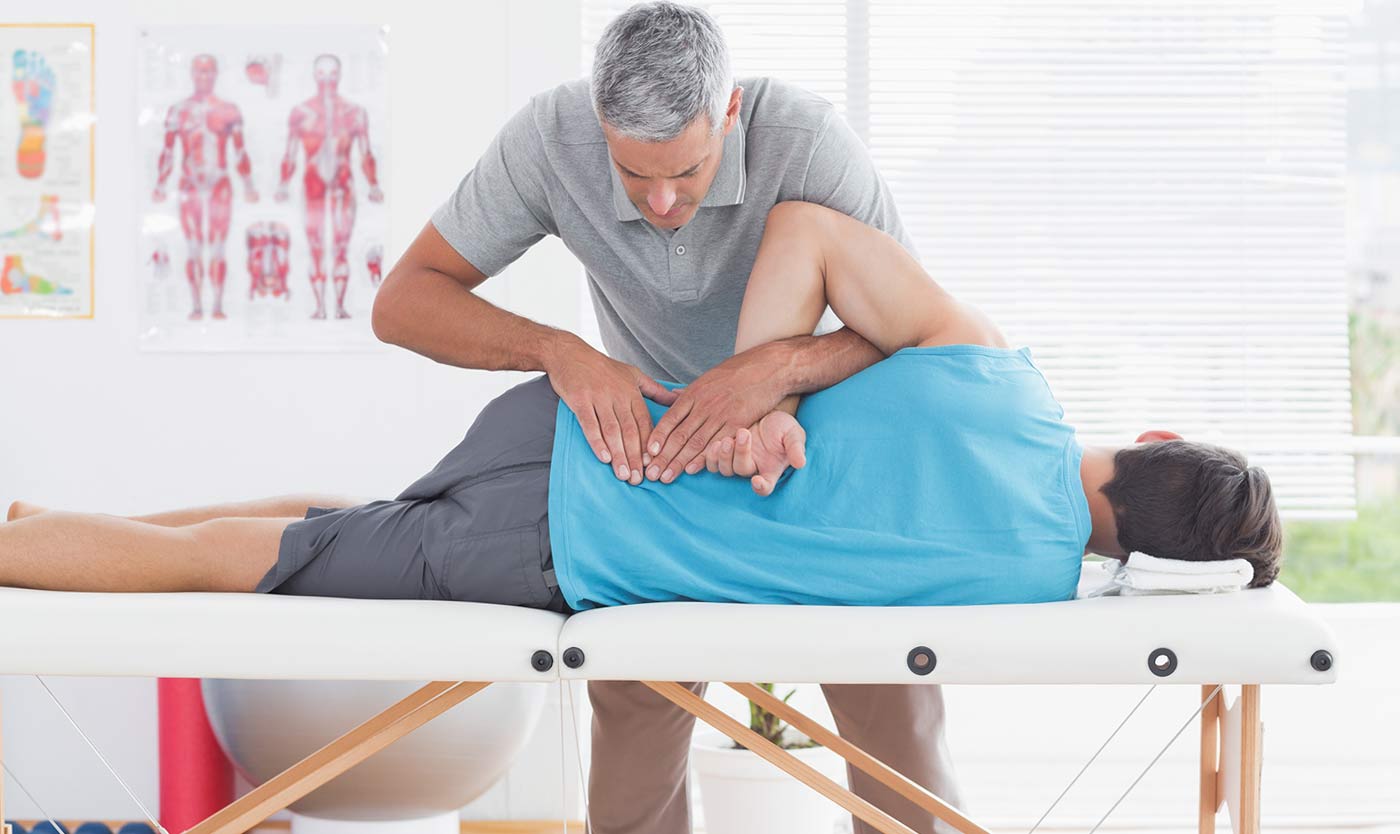

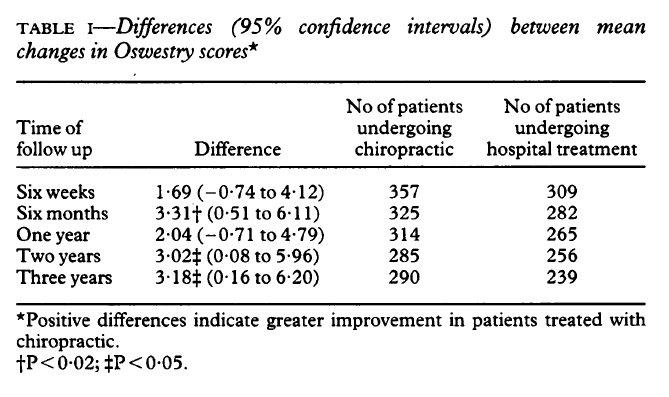
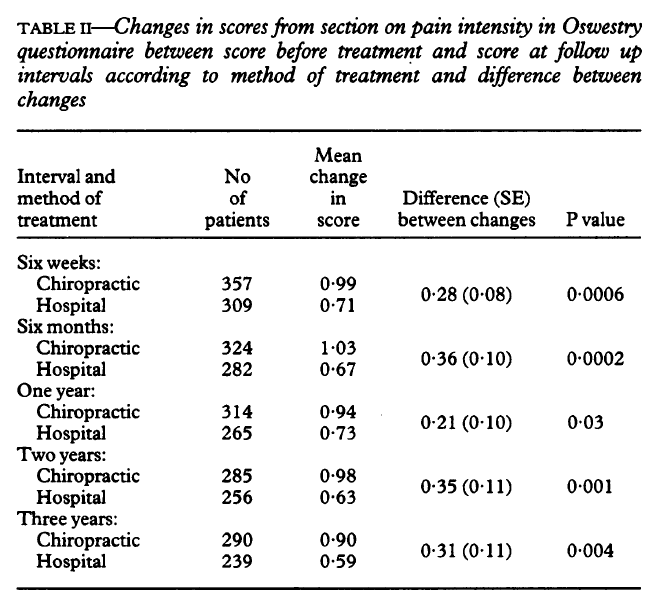
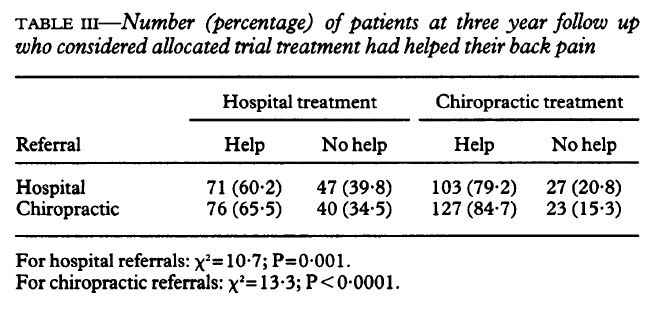




 The late nineties were an era of strong debate on the issue of genetically modified food and organisms in the UK. Controversy surrounded both the scientific and political aspects of GM, with government advisory bodies being accused of biased behavior and concerns being raised over the ethical issues of the science behind GM. At lunch, a bowl of good vegetable-based soup (home-made or Simply Organic�s naturally!) counts for another 1 or 2 portions and each one of our Pure & Pronto ready meals counts for a whopping 3 portions. Add a piece of fruit or two during the day and a salad or veg in the evening and you�re already at 6 or 7 portions of fruit and veg for the day � well above the 5.
The late nineties were an era of strong debate on the issue of genetically modified food and organisms in the UK. Controversy surrounded both the scientific and political aspects of GM, with government advisory bodies being accused of biased behavior and concerns being raised over the ethical issues of the science behind GM. At lunch, a bowl of good vegetable-based soup (home-made or Simply Organic�s naturally!) counts for another 1 or 2 portions and each one of our Pure & Pronto ready meals counts for a whopping 3 portions. Add a piece of fruit or two during the day and a salad or veg in the evening and you�re already at 6 or 7 portions of fruit and veg for the day � well above the 5. The stated aims of the GM Nation debate were twofold: to promote an innovative, effective and deliberative program of debate on GM issues, framed by the public, against the background of the possible commercial production of GM crops in the UK and the options for possibly proceeding with this; and through the debate provide meaningful information to Government about the nature and spectrum of the public views, particularly at grass roots level, on the issue to inform decision-making.
The stated aims of the GM Nation debate were twofold: to promote an innovative, effective and deliberative program of debate on GM issues, framed by the public, against the background of the possible commercial production of GM crops in the UK and the options for possibly proceeding with this; and through the debate provide meaningful information to Government about the nature and spectrum of the public views, particularly at grass roots level, on the issue to inform decision-making.